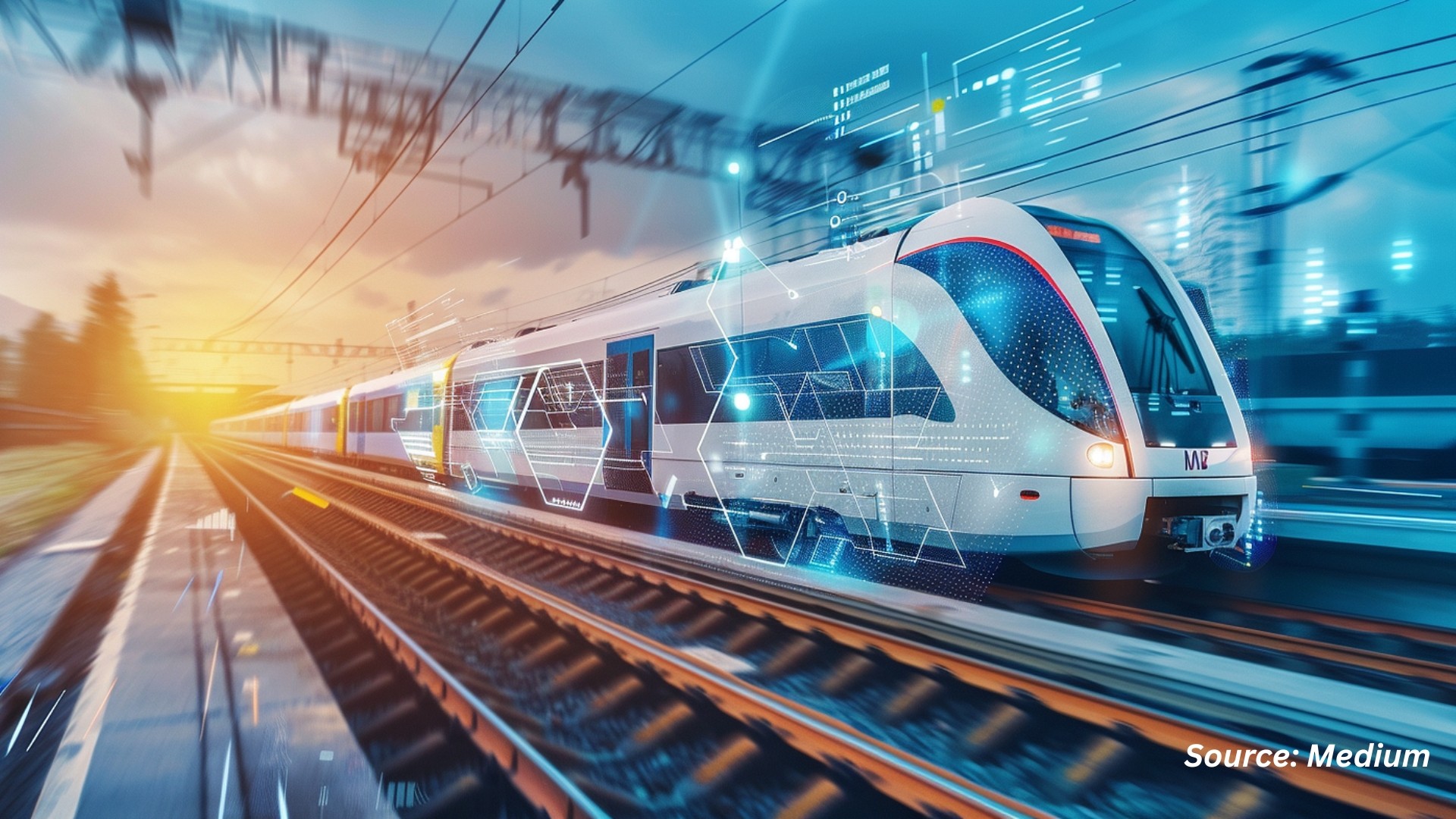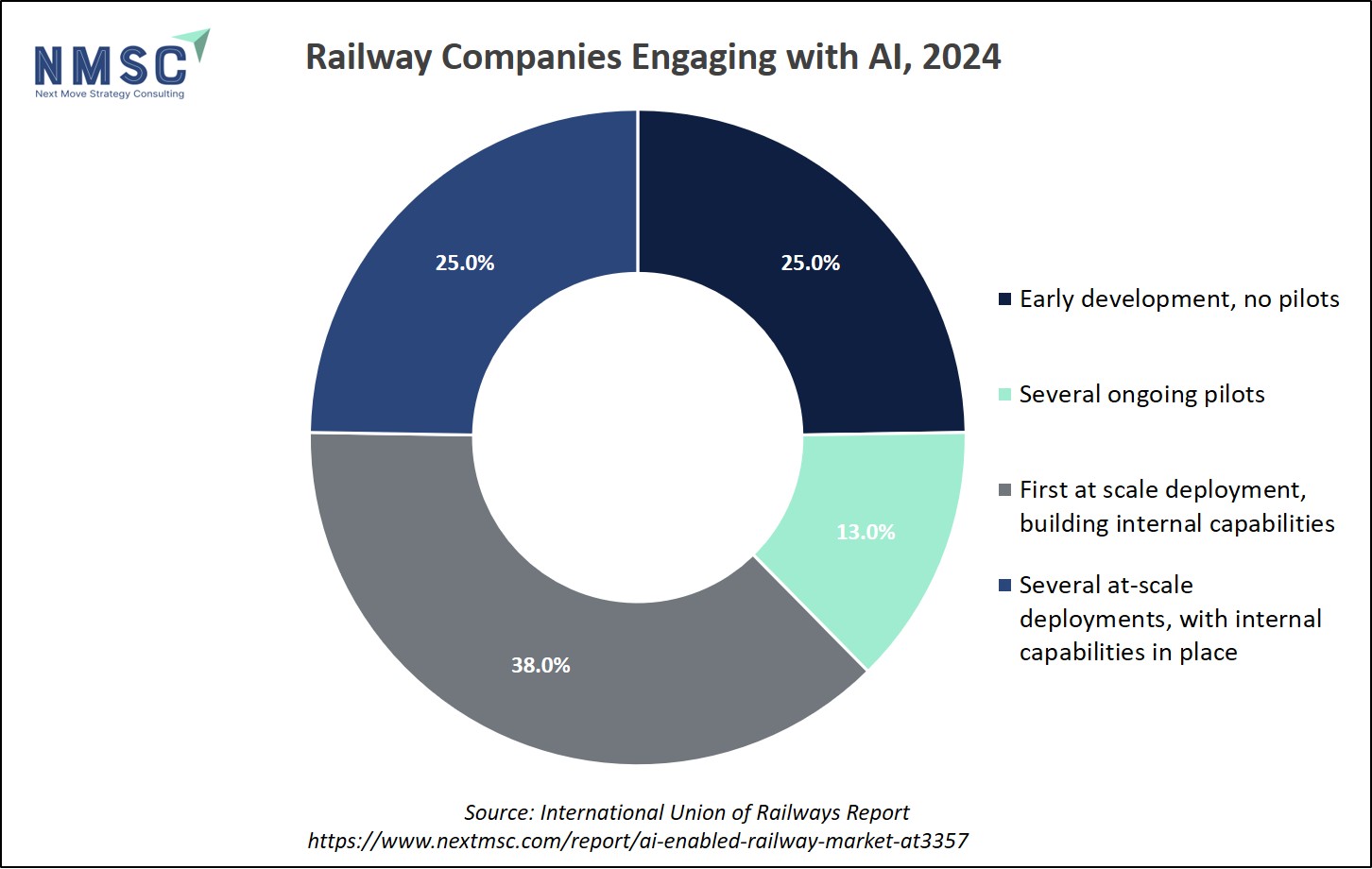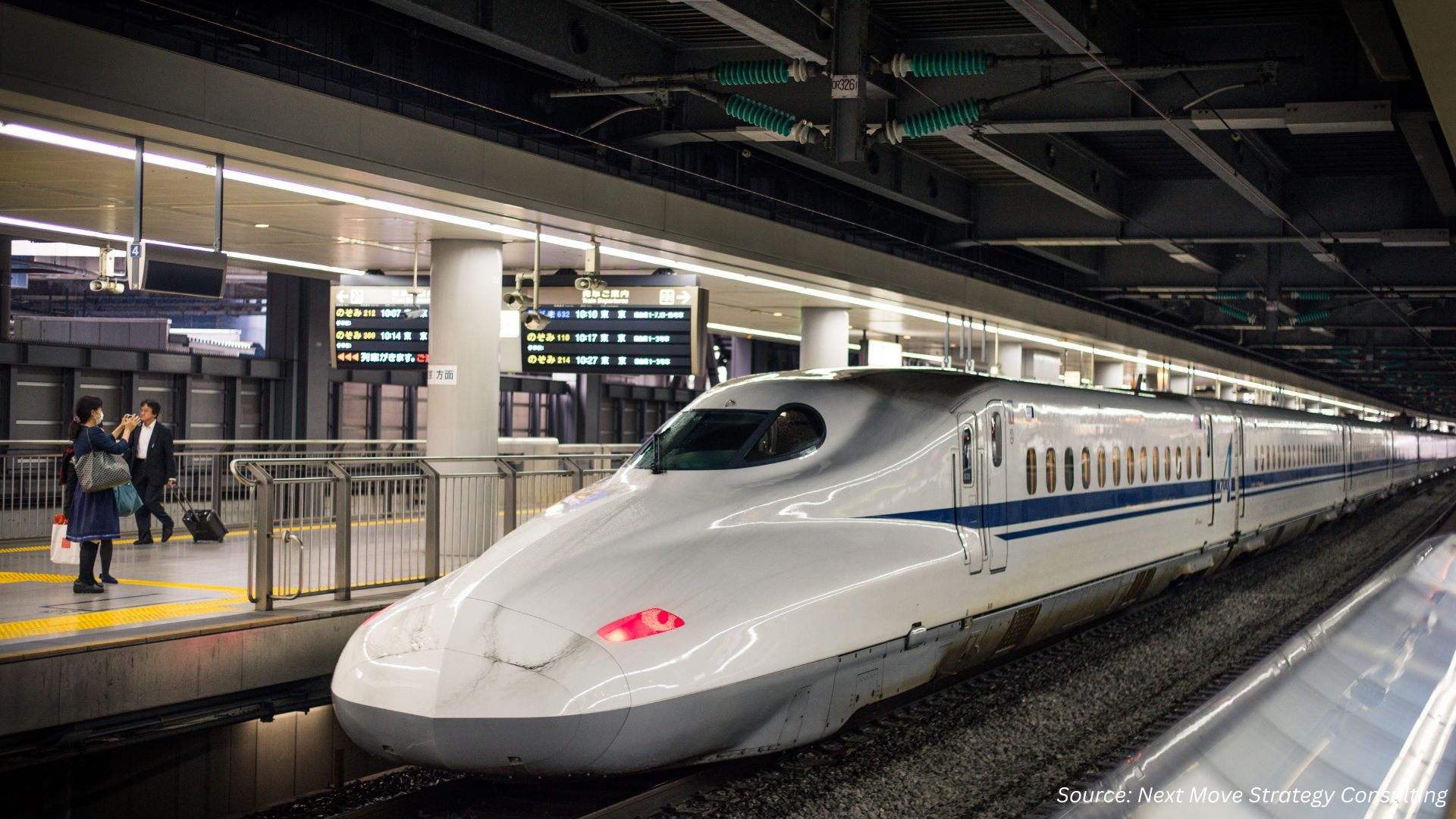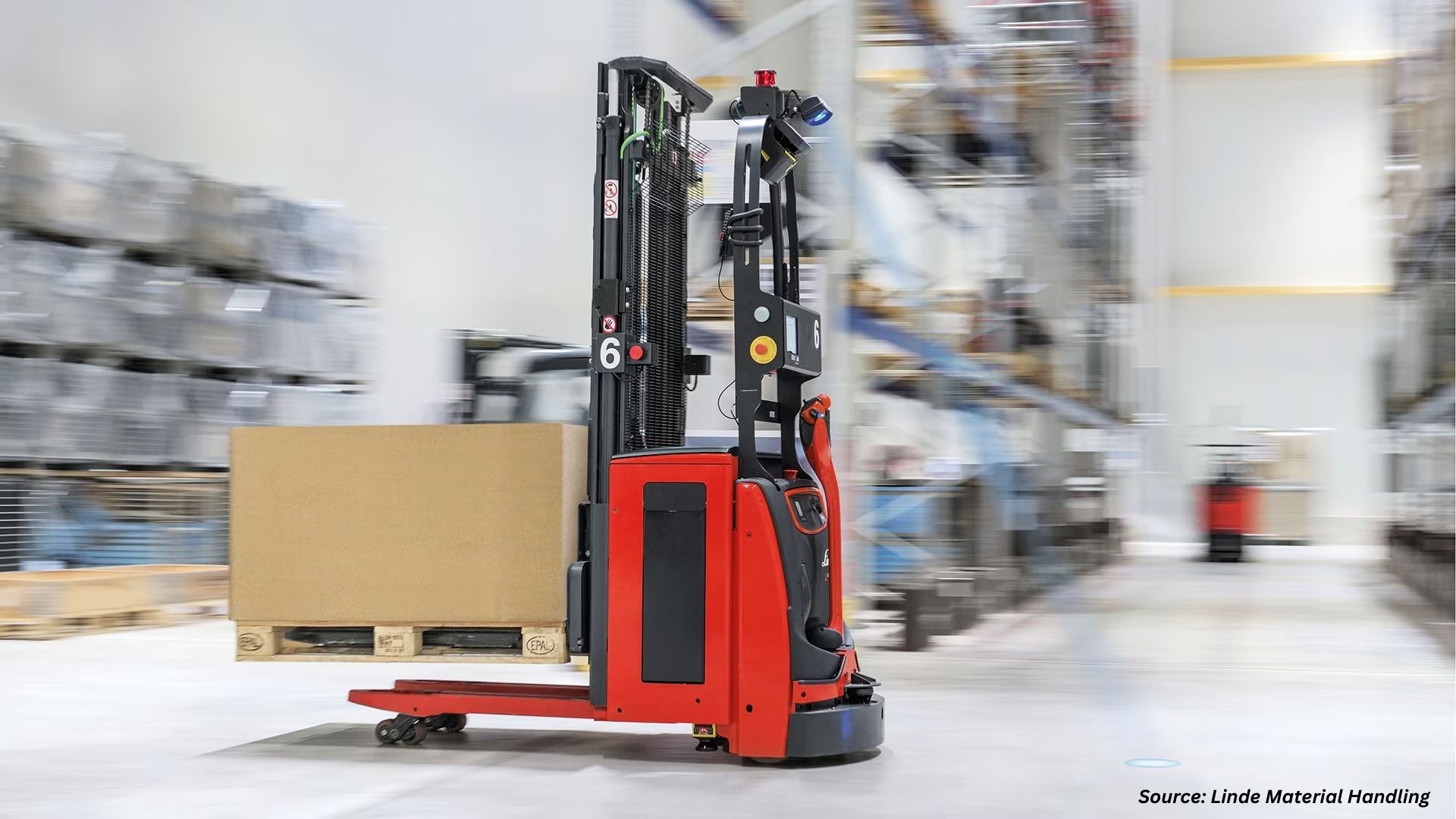AI Enabled Railway Market: 2024–2025 Overview
Published: 2025-09-10

Introduction
The global railway industry is undergoing a transformative phase, driven by artificial intelligence (AI), advanced connectivity, and automation. In 2024 and 2025, several high-impact initiatives and research breakthroughs are setting the stage for AI-enabled railways. From defect detection using digital twins to future-ready communications with 6G integration, these developments promise to reshape railway operations across safety, efficiency, and reliability.
This report presents an in-depth analysis of the latest AI-enabled railway technologies, based on original research and verified sources from 2024–2025.
6G Enabled Smart Railways: The Next Frontier
Why 5G Falls Short
While 5G has improved railway communications in recent years, it faces limitations with respect to ultra-high-speed mobility, ultra-low latency, and ubiquitous network coverage. Researchers now argue that 5G cannot fully support the growing demands of next-generation rail systems, particularly for high-speed rail networks that require precise localization and seamless connectivity.
Key Findings:
-
5G technology alone is insufficient for emerging railway operational needs.
-
A holistic framework integrating 6G, edge computing, and AI is necessary for next-generation railways.
Conclusive Statement:
6G-enabled systems will serve as the foundational infrastructure for future-proof, AI-enhanced railway operations.
DefectTwin: AI-Powered Railway Defect Detection
Traditional Challenges in Inspection
Railway infrastructure maintenance faces significant hurdles in detecting emerging defects, especially when traditional systems rely on limited datasets for training machine learning models. Conventional methods often struggle with rare or novel defect types, reducing their effectiveness.
Introducing DefectTwin
The "DefectTwin" framework addresses these limitations by integrating large language models (LLMs) with digital twin platforms. Developed through advanced research shared on arxiv.org and themoonlight.io, this solution utilizes LLMs to analyze visual data and detect both known and previously unseen defects.
Advantages of DefectTwin:
-
Reduces dependency on extensive historical defect datasets.
-
Improves detection accuracy by leveraging advanced language models.
-
Scales effectively across diverse railway infrastructures.
Key Findings:
-
DefectTwin enables efficient defect inspection through AI-enhanced visual analysis.
-
Performance on previously unseen defects is significantly improved, addressing a longstanding limitation of conventional models.
Conclusive Statement:
DefectTwin represents a major leap in AI-powered inspection technology, offering scalable accuracy and operational efficiency for railway maintenance.
UIC–McKinsey Industry Roadmap: AI’s Broad Economic Impact
Overview of the Joint Report
A joint report by the International Union of Railways (UIC) and McKinsey & Company outlines over 100 AI use cases within the railway sector. The report identifies 20 high-priority applications across domains such as safety, reliability, customer service, and operations.
Highlights from the Report:
-
Many railway operators are already piloting or deploying AI technologies.
-
Key use cases include predictive maintenance, automated inspection, scheduling optimization, and passenger experience enhancements.
-
The economic value from widespread AI adoption is projected to reach tens of billions of dollars annually.
Key Findings:
-
AI technologies offer wide-ranging potential across all functional areas of railway operations.
-
Strong business cases exist for immediate and phased AI deployment.
Conclusive Statement:
AI in the railway sector is rapidly evolving from isolated pilot projects to enterprise-grade solutions, offering measurable returns on investment and improved operational resilience.
Emerging R&D and Technology Trends in Railway AI
Key Innovation Areas
Beyond defect detection and next-generation networks, several additional research areas are gaining traction within the AI-enabled railway market. These include:
-
Digital Twins with LLMs: Solutions such as DefectTwin highlight the integration of AI models with digital twins for advanced asset monitoring.
-
6G-based Architectures: Studies underscore the importance of future communication systems that leverage 6G and edge computing for fast, distributed intelligence.
-
AI-Driven High-Speed Rail Mobility: Recent research projects focus on optimizing mobility management using AI-powered network slicing, beamforming, and predictive analytics.
Key Findings:
-
AI research in rail transport encompasses infrastructure, operational intelligence, and advanced communications.
-
Emphasis is on scalable, robust systems compatible with emerging technological ecosystems.
Conclusive Statement:
The future of railways is advancing toward AI-rich, interconnected platforms that combine digital twins, next-generation communications, and predictive analytics.
Railway Companies at Different Stages of Engaging with AI
According to UIC, the proportion of companies engaging with AI, and the level of deployment:
-
25% of railway companies are in early development stage with no pilots.
-
13% of companies are conducting several ongoing pilots.
-
38% of companies are at first at-scale deployment, focusing on building internal capabilities.
-
25% of companies have reached the stage of several at-scale deployments with internal capabilities in place.
Next Steps for Railway Operators
To unlock the full potential of AI in railway operations, industry leaders are advised to follow these strategic steps:
1. Evaluate Network Infrastructure:
-
Assess current network readiness for edge computing and plan for future 6G rollouts.
-
Identify gaps in coverage, latency, and computing capacity.
2. Pilot AI-Powered Inspection Platforms:
-
Initiate trials of digital twin–based inspection systems such as DefectTwin.
-
Validate performance in diverse operational environments before scaling.
3. Prioritize High-Impact AI Use Cases:
-
Utilize the UIC–McKinsey matrix to prioritize 10–20 key AI applications.
-
Focus on safety, operational reliability, customer experience, and maintenance.
4. Monetize Early Deployments:
-
Track savings, operational uptime, and KPI improvements from initial projects.
-
Quantify economic and operational value to build the case for broader AI investments.
5. Collaborate with Ecosystem Partners:
-
Engage with telecom providers, LLM developers, and standards bodies like UIC.
-
Establish partnerships to co-develop interoperable, scalable AI solutions.
Final Takeaway
The global railway industry is at a pivotal moment of transformation. The convergence of 6G communications, AI-powered digital twins, and edge computing marks the dawn of highly automated, intelligent rail networks.
-
6G and Edge Computing: Essential for meeting new demands in latency, mobility, and coverage.
-
DefectTwin: A breakthrough in AI-powered inspection, capable of improving maintenance operations and minimizing risks.
-
Industry Roadmaps: Evidence shows AI is transitioning from theory to widespread deployment, unlocking billions in economic value.
Railway operators that proactively invest in these technologies will not only enhance safety and efficiency but also achieve long-term competitiveness in a rapidly evolving transportation landscape.
About the Author
 Karabi Sonowal is an experienced SEO Executive and Content Writer in digital marketing. She excels in SEO, content creation, and data-driven strategies that boost online visibility and engagement. Known for simplifying complex concepts, Karabi creates impactful content aligned with industry trends.
Karabi Sonowal is an experienced SEO Executive and Content Writer in digital marketing. She excels in SEO, content creation, and data-driven strategies that boost online visibility and engagement. Known for simplifying complex concepts, Karabi creates impactful content aligned with industry trends.
About the Reviewer
 Sanyukta Deb is a seasoned Content Writer and Team Leader in Digital Marketing, known for her expertise in crafting online visibility strategies and navigating the dynamic digital landscape. With a flair for developing data-driven campaigns and producing compelling, audience-focused content, she helps brands elevate their presence and deepen user engagement. Beyond her professional endeavors, Sanyukta finds inspiration in creative projects and design pursuits.
Sanyukta Deb is a seasoned Content Writer and Team Leader in Digital Marketing, known for her expertise in crafting online visibility strategies and navigating the dynamic digital landscape. With a flair for developing data-driven campaigns and producing compelling, audience-focused content, she helps brands elevate their presence and deepen user engagement. Beyond her professional endeavors, Sanyukta finds inspiration in creative projects and design pursuits.

















Add Comment